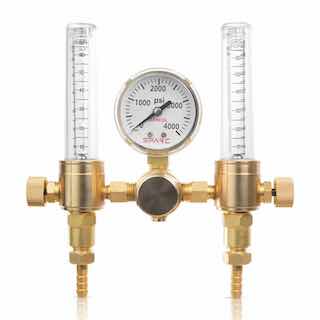Mig Welding tips - Merit Badge
Well its time now to move on from stick welding to mig welding.
The Boy Scout merit badge requirements give the scout a choice as to which welding process is used.
I think that was a very wise
move. Not every scout will have access to a certain type of welding but
by opening it up to all processes, the likelihood of finding some suitable
welding equipment is increased big time.
In rural areas where there is lots of farming, there is hardly a
barn without a welder of some kind. And in other areas, a 115 volt mig
welder is pretty common too...and even easy and economical to rent if
need be.
So this weeks video moves on to bare wire mig.
I say bare
wire mig because the same mig welder that is used with bare wire is
capable of using a flux core wire too. We will get to that soon
enough...in the next video of this series.
There are a few things a scout needs to know about mig welding with bare wire.
the
gas used is typically either straight c02, or a 75/25 argon.co2 mix.
There are several others that work for different purposed but these two
gases are the most popular in America.
Wire sizes differ and are usually selected according to the
thickness of metal being welding, or the power of the machine, or both.
.030" is a very common size ...so is .035" ....and .024" is often used
for thin sheet metal like auto body repair.
for bare wire mig, the machine polarity is set to electrode
positive.
That is essential.
Most mig welders have connections inside the panel door that alloy polarity to be selected to either electrode positive or electrode negative.
Electrode positive is used for bare
wire but many self shielded flux core wires require electrode negative.
The contact tip is what you see when you look at the very tip of the
mig gun. It has a hole running thru it and its important to use a tip
that is matched to the wire diameter being used.
There is a liner
inside the cable of a mig gun that resembles the throttle cable on a
lawnmower. It is usually a spiral wound steel cable. If it is ever
kinked, it will not work as well and sometimes will barely work. Kinked
liners need to be replaced.
There is a motor that feeds the wire thru the cable by using
hardened steel rollers with grooves in them usually at least two
rollers pinch against each other to provide pressure on the wire so that
as the motor turns the drive rollers it pushes the wire thru the cable,
out the contact tip, and into the weld. Smooth, consistent feeding of
wire is very important to achieve a smooth arc and smooth weld.
The spool of wire is usually inside a cabinet door ( except on heavy
duty mig machines with separate wire feeder) The spool of wire is
usually hung on a spindle with some type of tension adjustment that acts
as a brake so that when welding stops, the spool of wire does not keep
spinning from inertia.
The tension on the spool should be set just tight enough so the the spool does not
keep turning when welding stops. The best practice is to set the wire
speed to the maximum you will need for general welding and bump the
trigger while watching the spool.
If there is a lot of slack in the wire
after bumping the trigger, increase tension and repeat.
too much tension will cause problems in wire feeding too so dont overtighten.
same thing goes for the drive rollers. use enough tension to push the wire without any slipping but not more than that.
Ground clamp...ITs more important to have a good ground with mig welding than most other types of welding.
Why?
Because if you dont have a good ground, it is very hard to dial in the wire settings for a smooth arc.
Most mig machines dont have any type of sensor that signals the wire feeder that there is an intermittent ground.
So the wire just keeps pumping and makes you think an adjustment is needed when the only problem is the ground.
This can make you chase your tail.
Make sure you have a good secure ground so you can eliminate that variable.
Cheap
mig welders have cheap grounds. And some not so cheap mig welders still
have cheap ground clamps. ( the hobart machine I am using in this video
has a very cheap ground clamp) You can improve the ground by using
some twisted up braided copper if you have some. click here to see how to get a better ground.
at
the very least, make sure the ground clamp is attached to an area that
is clean bright metal with no mill scale or paint and as close as
possible to the weld.
when there is any doubt, clamp the ground clamp directly to the part being welded.
Mig welders found in shops and garages will have either .024", .030" or .035" wire. (if its bare wire)
and in America, the shielding gas will usually be either 75/25 ar/co2 or straight co2.
I prefer 75/25 but also have a paintball size co2 bottle that connects to the Hobart 210mvp that makes it portable.
Co2 works ok but seems to have a much tighter sweet spot as far as voltage and wire speed settings go.
Some inverter type mig welders are designed to be used with co2. The Miller Passport is one example.
Setting voltage and wire speed can be a challenge for someone new to welding.
there is no foolproof way to set these 2 settings because all machines are different.
However,
if a machine is rated to weld 1/4" thick metal as a maximum, you can
kind of assume you will be set near maximum on voltage.
so the
approach might be to set the machine to max voltage and max wire feed
speed and then weld on some scrap metal and trim back the wire speed
until you get the nice bacon frying sound that indicates the voltage and
wire speed are balanced.
see more mig welding videos













